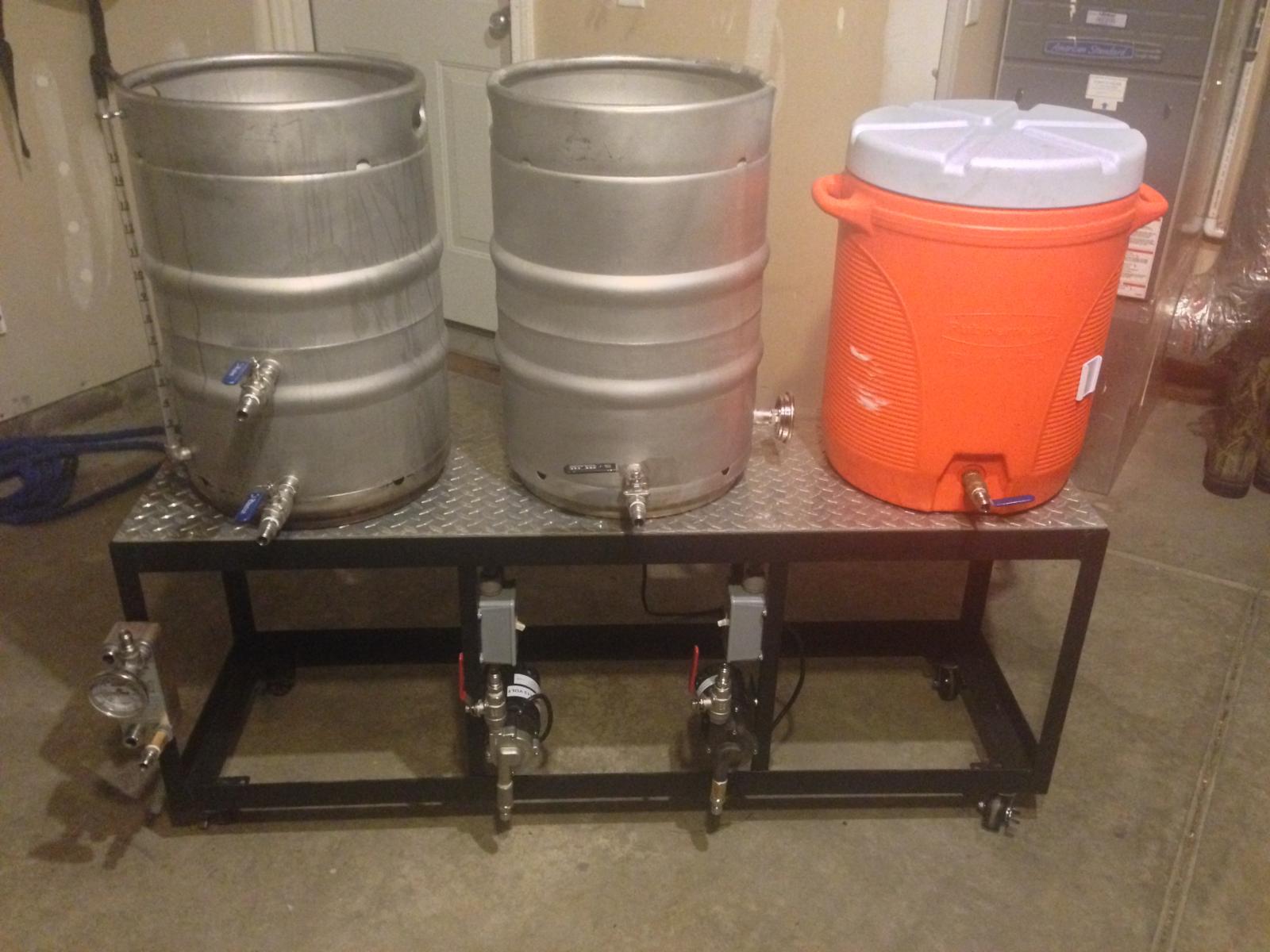Pump or not? hmm...
The only use I have for my pump at the moment and has been for the past 6 years is to recirculate wort through my plate chiller back into the kettle and create a whirlpool (for hops) if I want to. I drain into my fermentors through the pump and plate chiller, and usually just fed by gravity. It chills those last 20-30 degrees on the way to the fermentor fast enough. The pump also causes too much suction which tends to plug up the filter in the kettle, ending up in a drizzle on the outlet hose. Gravity works better!
I like to mash in a cooler that's on a knee high, low bench and easy to stir. I drain the wort 2-3 gallons at a time into 3.5 gallon buckets which I lift and dump into my kettle. The kettle on a 3500W induction plate is my source for hot brewing water. I temporarily store hot sparge water in a few large pots, while filling the kettle with wort. The temp is not critical for batch sparging, which I do twice with equal volumes. I usually do 5.5 gallon batches, but 11 gallon occasionally. Same system, just larger (15 gal) kettle.
Now we could find ways to make brewing way more complicated...
The only use I have for my pump at the moment and has been for the past 6 years is to recirculate wort through my plate chiller back into the kettle and create a whirlpool (for hops) if I want to. I drain into my fermentors through the pump and plate chiller, and usually just fed by gravity. It chills those last 20-30 degrees on the way to the fermentor fast enough. The pump also causes too much suction which tends to plug up the filter in the kettle, ending up in a drizzle on the outlet hose. Gravity works better!
I like to mash in a cooler that's on a knee high, low bench and easy to stir. I drain the wort 2-3 gallons at a time into 3.5 gallon buckets which I lift and dump into my kettle. The kettle on a 3500W induction plate is my source for hot brewing water. I temporarily store hot sparge water in a few large pots, while filling the kettle with wort. The temp is not critical for batch sparging, which I do twice with equal volumes. I usually do 5.5 gallon batches, but 11 gallon occasionally. Same system, just larger (15 gal) kettle.
Now we could find ways to make brewing way more complicated...














































![Craft A Brew - Safale S-04 Dry Yeast - Fermentis - English Ale Dry Yeast - For English and American Ales and Hard Apple Ciders - Ingredients for Home Brewing - Beer Making Supplies - [1 Pack]](https://m.media-amazon.com/images/I/41fVGNh6JfL._SL500_.jpg)












